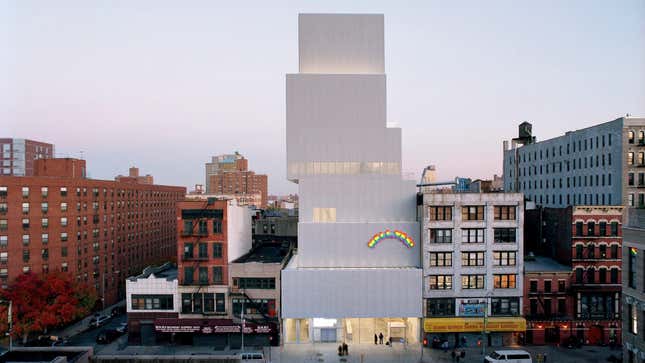The New Museum's Union Resistance Contradicts Its Radical Inception
Latest

In the late 1970s, curator Marcia Tucker was fed up with a corporate attitude that pervaded New York art museums, even the Whitney where she worked. “I felt like I was working for a cutthroat Fortune 500 company instead of a museum,” she wrote in her autobiography A Short Life of Trouble: Forty Years in the New York Art World. “I started to hear things like, ‘Museums are businesses and should be run as such.’”
It was those sorts of comments that led Tucker, who died in 2006, to create the New Museum in 1977, after she was fired from the Whitney. Unlike many art museums in the city at the time, Tucker envisioned the New Museum as a place constantly in movement. Where other museums were weighed down by expensive collections and chained to a historical canon, she was primarily interested in contemporary artists; she initially toyed with the idea of de-accessioning the New Museum’s collection (which, aside from a few items, it still doesn’t own) every decade to keep the museum “young.”
It was this ethos that almost immediately brought notoriety to the New Museum and Tucker’s curating in its early years, for instance exhibiting “bad paintings” that threw traditional ideas of beauty out the window and championing a diverse group of artists like Ana Mendieta, Félix González-Torres, and David Wojnarowicz while simultaneously cementing their legacies. “Her ability to communicate to her board that a moment’s present will be the future’s past gained her the freedom to programme controversial materials, some of which of course became important in retrospect,” historian Nizan Shaked wrote of her tenure.
But the New Museum’s radical approach to what a museum could be did not end with what Tucker put on the walls. “I wanted to redefine the concept of the museum altogether, to turn it upside down and do all the risky things I had wanted to do but couldn’t at the Whitney,” Tucker wrote in her autobiography. “I still believed that the personal was the political, and I wanted to live and work according to my principles.” Collaboration, above all, was key to Tucker’s ideas of what makes a museum great, whether it be through the creation of her “Minority Dialogues” series where rising artists of color met with museum staffers to discuss their concerns over representation or peer-reviewing decisions at all levels of the museum.
“For all those years I spent at the New Museum, my so-called leadership skills were always under attack both from inside and outside,” Tucker said in a 2006 interview. “However with time I realized that what others call a lack of leadership can really be a different kind of leadership, one based not on hierarchy and power, but on empowerment – communication, collaboration, listening, and consensus building. That’s my idea of responsibility.”
-

-

-

-

-

-

-

-

-

-

-

-

-

-

-

-

-

-

-

-

-

-

-

-

-

-

-

-

-

-

-

-

-

-

-

-

-

-

-

-








































